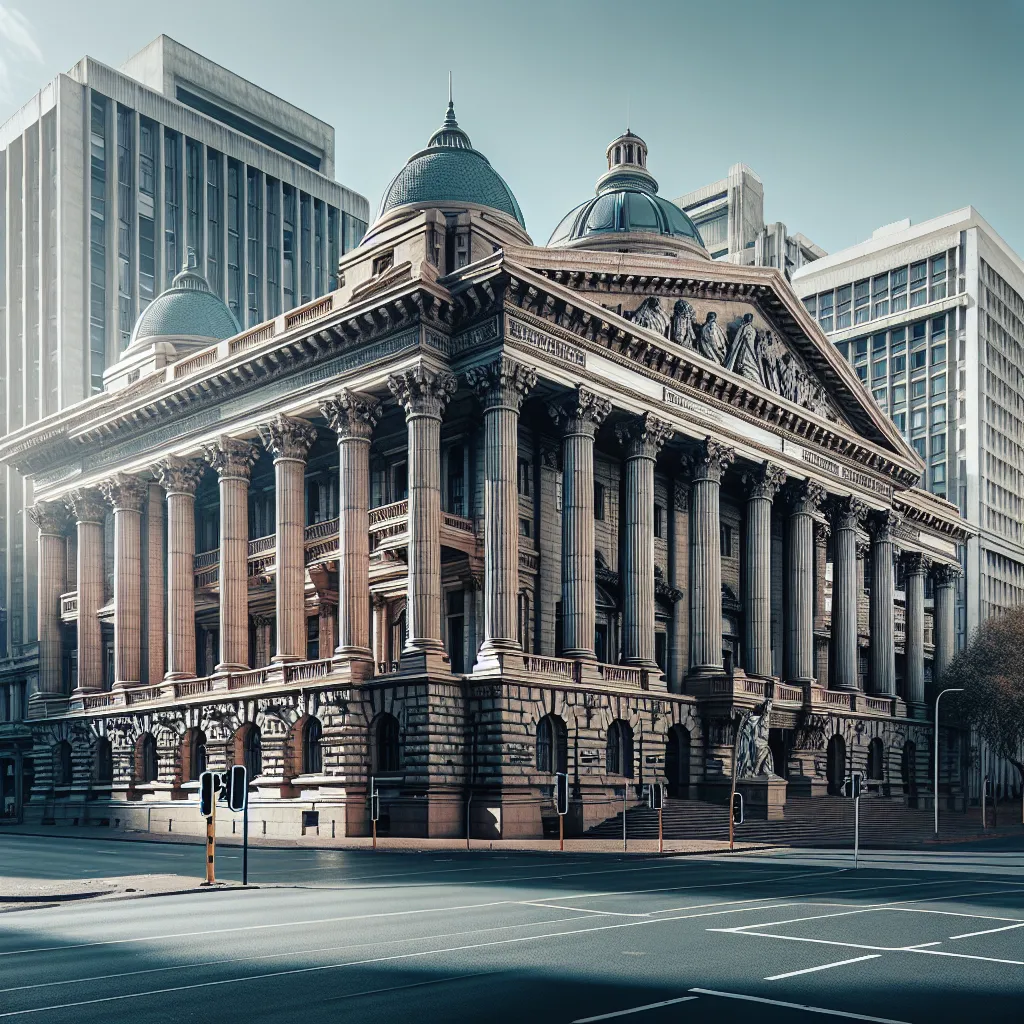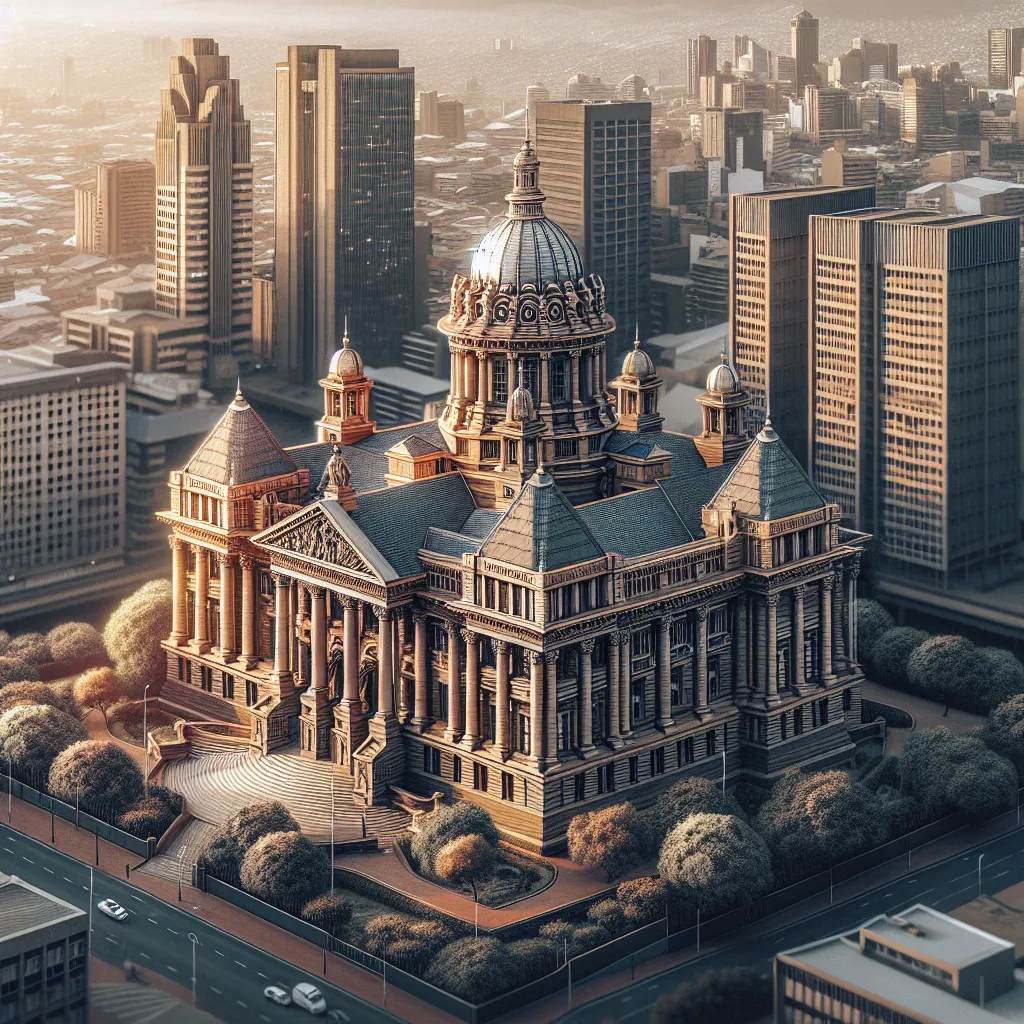Ask AI on The Internet
Question: Write a report on the Johannesburg High Court building in the report discuss these following: when it was constructed, who was the architect and the building's architectural elements and its form and power.
## Report on the Johannesburg High Court Building ### Introduction The Johannesburg High Court building stands as an iconic edifice in the heart of Johannesburg, South Africa. It plays a critical role in the nation's judicial system, symbolizing justice and authority. In this report, we delve into the historical and architectural aspects that have defined this structure since its inception. ### Construction Timeline The Johannesburg High Court was constructed during a period of significant growth and development in the city. The building was completed in 1910, during an era when Johannesburg was rapidly evolving into a major urban center in South Africa. ### Architectural Design and Architect The architect behind the Johannesburg High Court building was Gordon Leith, a distinguished figure in South African architecture during the early 20th century. Leith's vision for the building was to create a space that not only served its judicial function but also conveyed a sense of grandeur and authority. ### Architectural Elements and Style The Johannesburg High Court building is an excellent example of the Edwardian Neo-Classicism style, which was popular at the time of its construction. The building features several distinctive architectural elements: 1. **Facade and Ornamentation**: The facade of the building is adorned with grand columns and intricate stonework, exuding a sense of permanence and strength. The use of classical columns and pilasters reflects the influence of ancient Roman and Greek architecture, which is often associated with ideals of justice and democracy. 2. **Symmetry and Proportion**: The design of the building emphasizes symmetry and proportion, which are key characteristics of classical architecture. This creates a balanced and harmonious visual impact, reinforcing the authority and stability of the judicial system housed within. 3. **Interior Spaces**: Inside, the building boasts high ceilings, large windows, and spacious corridors, contributing to a sense of openness and transparency. The courtrooms themselves are designed to command respect, with high benches and ample seating for observers, ensuring that the judicial process is accessible and visible to the public. ### Form and Power The form and power of the Johannesburg High Court building are deeply intertwined with its architectural elements and design principles: 1. **Symbolism of Justice**: The imposing classical design elements, such as the grand columns and symmetrical layout, symbolize the timeless principles of justice, fairness, and order. The building's architecture conveys a sense of authority and respect, underscoring the power vested in the judiciary. 2. **Public Accessibility and Transparency**: The thoughtful design of interior spaces not only allows for the efficient functioning of the courts but also ensures that the judicial process is transparent and accessible to the public. This openness is a fundamental aspect of democratic societies, where justice must be seen to be done. 3. **Durability and Permanence**: The materials chosen for the construction of the building, including stone and other durable elements, emphasize the permanence and stability of the judicial system. The building stands as a lasting testament to the rule of law in South Africa. ### Conclusion The Johannesburg High Court building is more than just a functional space for legal proceedings; it is a powerful symbol of justice and authority. Designed by Gordon Leith in the Edwardian Neo-Classicism style, the structure's architectural elements convey a sense of strength, transparency, and permanence. As Johannesburg continues to grow and evolve, the High Court building remains a cornerstone of the city's judicial landscape, upholding the principles of justice and fairness for all.
Think your answer is better than the AI's? Post it below.
Other Most Relevant Posts:
 **Project Title:** High Density Housing Subdivision at Hoy Park
**1. Introduction**
- **Overview of the project site:** Hoy Park
- **Location:** Situated between Florence Nzama Street and Sylvester N
**Project Title:** High Density Housing Subdivision at Hoy Park
**1. Introduction**
- **Overview of the project site:** Hoy Park
- **Location:** Situated between Florence Nzama Street and Sylvester N
Question Tags
If you want your question answered by an AI, click here.






Post your own comment: